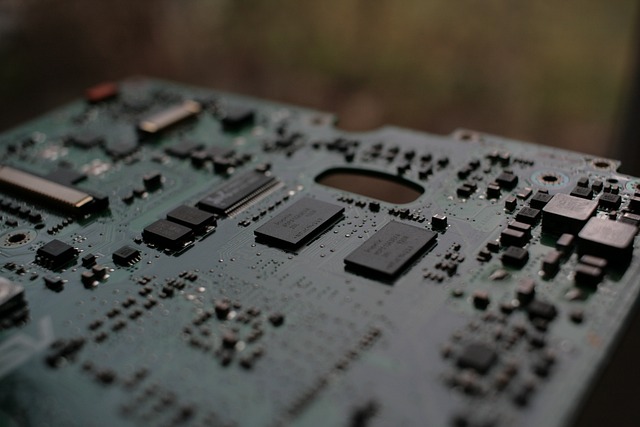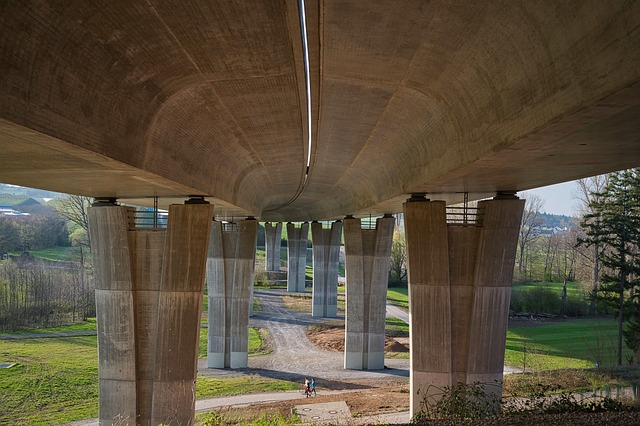Concrete foundation damage, caused by settlement or heave, requires understanding its causes (e.g., poor construction, environmental impact) and types for effective repair. Assessment involves identifying cracks, bowing walls, and uneven floors. Non-Destructive Testing (NDT) methods like ultrasonics and GPR safely evaluate concrete issues without further damage. Repair techniques range from injection molding for minor cracks to structural reinforcement for severe cases. Selecting high-quality materials ensures long-lasting repairs. Costs vary based on damage complexity and affected area size, with epoxy injections being cost-effective compared to replacements. Regular maintenance, including crack sealing and proper drainage, prevents future issues.
“Concrete foundation repair is a crucial aspect of maintaining any structure’s integrity. This comprehensive guide delves into the intricate world of concrete repair, addressing common causes of damage such as shifting soil, excessive moisture, and structural defects. We explore assessment methods, from visual inspections to advanced non-destructive testing, and unravel repair techniques ranging from crack filling to structural reinforcement. Discover the importance of selecting appropriate materials and budgeting for repairs while learning preventative measures to safeguard your concrete foundation.”
Understanding Concrete Foundation Damage: Common Causes and Types

Concrete foundation damage is a common concern for many property owners, and understanding its causes and types is crucial in effective concrete repair. This type of damage can result from various factors, often stemming from poor initial construction, environmental conditions, or structural failures over time. One of the primary reasons for concrete foundation problems is settlement, where the soil beneath the structure compacts, causing cracks and unevenness in the concrete. Another frequent issue is heave, which occurs when moisture expansion pushes upward on the concrete, leading to lifting and potential warping.
The types of damage can vary widely. Cracks, ranging from thin hairline fractures to large, diagonal breaks, are a common indicator of foundation stress. Bowing or bending walls are another sign, suggesting significant structural issues. Settling may result in uneven floors, doors that stick, or gaps around windows. Identifying the specific cause is vital for selecting the right concrete repair method, whether it’s crack sealing, underpinning, or more extensive structural reinforcement.
Assessment and Inspection: Identifying the Extent of Damage

When addressing concrete foundation repair, a thorough assessment and inspection are crucial steps in understanding the extent of damage. This initial phase involves meticulous examination by skilled professionals who identify potential issues such as cracks, sinks, or misalignments. They carefully evaluate structural integrity, noting any signs of shifting or instability that might indicate deeper problems.
During this process, experts consider various factors including age and construction type to determine the root cause of damage. This precise analysis enables them to recommend appropriate Concrete Repair methods, ensuring long-lasting solutions tailored to the specific needs of each structure.
Non-Destructive Testing Methods for Evaluation

When it comes to evaluating concrete foundation issues, Non-Destructive Testing (NDT) methods offer a safe and effective way to assess damage without causing further structural harm or expense. These techniques are particularly useful for Concrete Repair as they allow professionals to pinpoint weaknesses, cracks, and other defects while preserving the integrity of the existing structure.
Common NDT methods include ultrasonics, electromagnetic induction, and ground-penetrating radar (GPR). Ultrasonics uses high-frequency sound waves to detect internal structural changes. Electromagnetic induction measures induced currents to identify areas of steel reinforcement. GPR, on the other hand, sends radio signals into the concrete, generating images that reveal voids, cracks, or other anomalies beneath the surface. Each method provides valuable insights for Concrete Repair specialists, enabling them to make informed decisions and implement tailored solutions.
Repair Techniques: From Crack Filling to Structural Reinforcement

Concrete repair techniques range from crack filling to structural reinforcement, offering a variety of solutions for different issues. For smaller cracks, injection molding with epoxy or polyurethane is often effective. This method involves injecting a flexible material into the crack, which expands and hardens to fill and support it.
For more severe damage, structural reinforcement is required. This includes techniques like steel cabling, where high-tensile strength steel cables are inserted into the concrete to hold it together. Beam and column repair or replacement is also common, involving the use of new concrete or steel elements to restore structural integrity. These advanced repair methods address not just the visible cracks but also the underlying causes, ensuring a longer-lasting and more stable foundation.
Choosing the Right Materials for Long-Lasting Results

When it comes to concrete foundation repair, selecting the appropriate materials is paramount for achieving long-lasting results. The durability and strength of the chosen products directly impact the longevity of the entire structure. For instance, using high-quality epoxy injections can effectively fill cracks and prevent further damage, ensuring stability over time. Similarly, specialized concrete patching compounds offer a robust solution for repairing larger flaws, contributing to a more solid foundation.
Professionals in Concrete Repair understand that different materials cater to various repair scenarios. For structural repairs, steel reinforcement bars might be employed to add strength and stability to the affected areas. On the other hand, hydraulic cements are ideal for their rapid setting properties and resistance to moisture, making them suitable for quick fixes while ensuring longevity.
Cost Considerations: Budgeting for Concrete Foundation Repair

When it comes to budgeting for concrete foundation repair, it’s essential to understand that costs can vary widely depending on several factors. The complexity of the damage plays a significant role; minor cracks and surface repairs are typically less expensive than extensive structural repairs or full foundation replacements. Additionally, the size of the affected area will influence the overall cost. Each project is unique, so obtaining detailed estimates from reputable concrete repair contractors is crucial for accurate budgeting.
Another consideration is the choice of materials and methods used in the repair process. Different techniques and materials have varying price points. For instance, epoxy injection for crack repair is more affordable than full foundation replacement or the use of specialized materials designed for extreme conditions. Property owners should research and compare quotes to find a balance between quality repairs and their financial capabilities, ensuring they choose a solution that offers both longevity and value.
Preventative Measures: Maintaining Your Concrete Structure

Regular maintenance is key to preventing concrete foundation repairs. It’s important to note that simple measures like sealing cracks, removing debris promptly, and addressing drainage issues can significantly prolong the lifespan of your concrete structure. Regular inspection is crucial; identifying potential problems early on allows for minor fixes before they turn into costly repairs.
In terms of specific preventative actions, applying a quality seal coat to exposed concrete surfaces helps protect against moisture penetration, which is a leading cause of damage. Additionally, ensuring proper drainage around your foundation by clearing leaves, debris, and directing downspouts away from the structure can prevent water from pooling and causing stress on the concrete.
